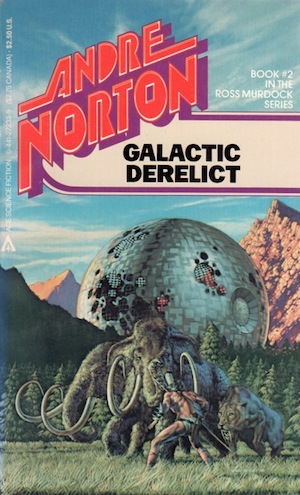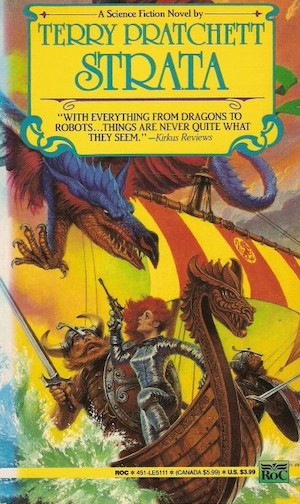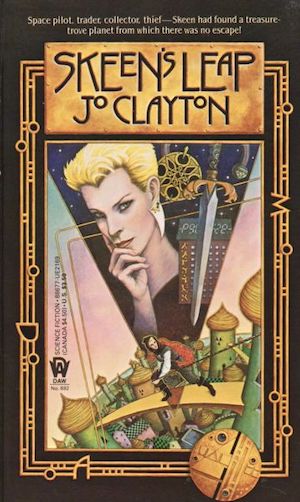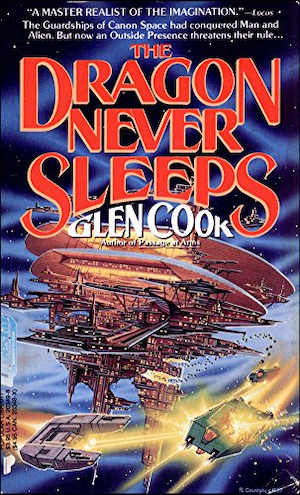Good news from deep space: NASA has reestablished contact with the ailing Voyager 1 spacecraft, even though the Voyager is 24 billion kilometers and 22 light-hours away from its terrestrial programmers. The nearly half-century old space probe survives… at least for the moment.
Young people may be astonished to discover that it was at one time possible to build devices that continued functioning for decades. In fact, cunning design, high quality materials, and luck can enable human creations to survive not just decades but long after their creators have died. In some cases, such as Roman roads1, they have outlived the civilizations that created them.
Unsurprisingly, SF authors are quite fond of the idea of durable artifacts. No need to explain how their setting’s civilizations created such; those precursors are now conveniently vanished. As long as one understands what something does, it’s not necessary to understand how it works if one just wants to use it2.
Consider these five vintage works of SF that involve technological relics.
Galactic Derelict by Andre Norton (1959)

Fifteen thousand years ago many alien starships visited Earth. Many never left. The passage of millennia has reduced the starships to enigmatic fragments. However, both Americans and their Soviet rivals have developed time machines that can retrieve alien artifacts from the distant past.
A series of mishaps traps four Americans (Travis, Ross, Ashe, and Renfry) on what turns out to be a fully functional derelict. Slave to its programming, the craft bears the four men along an ancient trade route. The reluctant passengers find that the aliens who built the ship are long gone, but many of the dead aliens’ artifacts remain perfectly functional.
Often SF authors imagine that working alien relics will turn out to be doomsday devices. Norton’s imagination is kinder: the quartet survive because the alien refueling infrastructure is surprisingly durable.
Hiero’s Journey by Sterling E. Lanier (1973)

Long after atomic doom scoured western civilization from the face of the planet, the Metz Republic and the Otwah League prevail under the benevolent guidance of the Church Universal. The Church is reaching the limits of its clerk-and-filing-cabinet-based information technology. Pre-apocalyptic technology might solve their problems.
Accompanied by an intelligent bear and a telepathic war-moose, Secondary Priest-Exorcist, Primary Rover, and Senior Killman Hiero Desteen is dispatched to the radioactive wastelands once known as the United States of America. Desteen’s goal? A legendary artifact known as a “computer.”
Lanier demonstrates considerable faith in the durability of modern-day technology. The travelers need only hit an on-switch for pre-war machines to activate. Impressive, considering that the novel is set in the year 7476 AD.
Strata by Terry Pratchett (1981)

Enigmatic Jago Jalo returns from a thousand-year relativistic journey bearing a potentially valuable secret. Jago recruits planetary engineer Kin Arad to further explore Jago’s discovery, with an eye to exploitation. The discovery? A clearly artificial flat Earth.
Ancient alien relics are not novel. Kin’s profession depends in part on reverse engineering the technology left behind by the alien “Spindle Kings.” Nevertheless, this discworld is an audacious achievement… one whose service life will soon end, and whose inhabitants have need of a person like Kin.
A note to Pratchett fans who have not read Strata: while this novel is by Pratchett and does feature a discworld, this Pratchett discworld is not the Discworld for which Pratchett is famous.
Skeen’s Leap by Jo Clayton (1986)

Skeen makes her living facilitating the repurposing of durable relics left by vanished civilizations. Authorities call this “grave robbing,” and would happily imprison Skeen if they could only get their hands on her. Heretofore, Skeen has been able to flee arrest. Now she is marooned on the backwater planet Kildun Aalda. Capture seems only a matter of time.
Fortuitously, the alien Ykx left in their wake some interdimensional gates. Skeen need only step through one to escape Kildun Aalda’s police. There is a catch. This gate turns out to be one way and while the gates are durable, the same cannot be said of the advanced technology previous gate users carried with them. Skeen escaped a backwater world to arrive on a barbarian planet devoid of even the most primitive starship. Skeen’s new home does, however, enjoy a proliferation of cutthroat politics.
I suspect any setting where functioning alien relics are a thing has developed protocols for testing mysterious gates. Given her profession, Skeen is no doubt familiar with such protocols. I’m guessing she eschewed proper procedure because she was more afraid of the cops than of whatever was on the other side of the gate.
The Dragon Never Sleeps by Glen Cook (1988)

Having stumbled across Canon Space, humans wasted no time using its superluminal networks to conquer every alien civilization within reach. In the millennia since the conquest, vast Guardships have kept the human boot firmly on alien throats. However, humans are not immune to entropy. Despite their best efforts to enforce stasis, change is coming.
Humans could not have established their empire had not an alien race first built what humans assumed was an interstellar portal network. Interestingly, although the alien creation can be used that way, that’s not what it was made for. Misusing it degrades the network…with unexpected consequences.
There are so many works I could have mentioned—Pohl’s Gateway, George O. Smith’s “Lost Art,” Simak’s Way Station—but didn’t. No doubt I missed some of your favourite works about tech relics. If so, please regale us with titles and authors in comments below.
- There is of course a considerable survivorship bias. We’re impressed by the craftmanship of a functioning 2000-year-old Roman road. We do not even think about all the shoddy Roman roads that vanished soon after they were built. ↩︎
- When it comes to stupendously durable cursed items, you don’t need to know how ancient Egyptian magic worked to know that waking up an angry, immortal, nigh-godlike monster bent on global destruction is probably a bad idea. ↩︎














